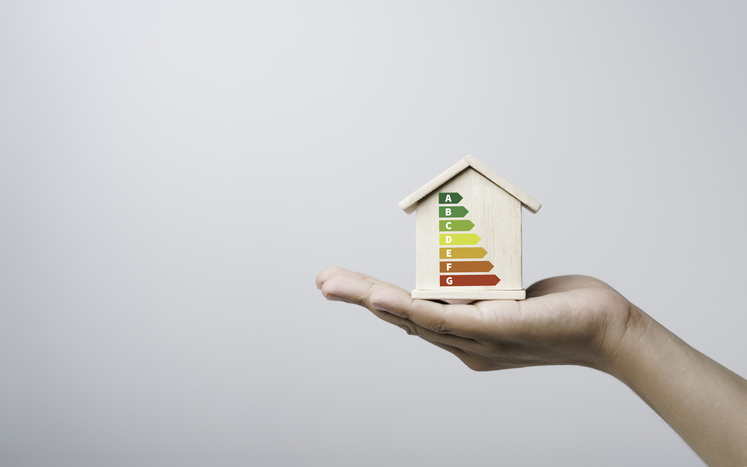
With the UK legally committed to achieving net-zero carbon emissions by 2050, the pressure is on for businesses—particularly large organisations—to play a leading role in decarbonisation. Commercial buildings account for roughly 18% of the UK’s greenhouse gas emissions, with energy consumption from lighting, heating, ventilation, and equipment being key contributors.
To remain compliant, competitive and environmentally responsible, large businesses across all sectors—from corporate offices to industrial facilities—must begin by addressing the one thing they can’t manage unless they measure: energy.
Why Businesses Must Act Now
Carbon legislation is no longer on the horizon—it’s here. The UK’s Streamlined Energy and Carbon Reporting (SECR) framework and the Energy Savings Opportunity Scheme (ESOS) require many businesses to disclose their energy use and carbon intensity. But compliance is just the start.
Energy costs are climbing. Investors are demanding robust ESG strategies. And customers increasingly expect companies to demonstrate environmental stewardship. In this context, energy management is not simply an operational concern—it’s a strategic priority.
Energy Management Systems: The Backbone of Carbon Strategy
An Energy Management System (EMS) is one of the most powerful tools a business can deploy to meet energy and carbon reduction goals. These systems collect real-time data on energy use across buildings, departments, processes and individual assets—turning raw consumption into meaningful insights.
With a well-installed EMS, organisations can:
• Track electricity, gas and water usage across multiple locations
• Identify inefficiencies, such as out-of-hours usage or waste from legacy equipment
• Benchmark performance between sites or zones
• Set reduction targets and automate alerts for anomalies
• Build a data-backed strategy for continuous improvement
EMS platforms not only provide clarity—they empower action. Businesses can adjust operations, change behaviours, and retrofit buildings with confidence that decisions are based on evidence.
Smart Technology: Expanding Beyond the EMS
While an EMS provides the analytical foundation, achieving real energy savings also requires practical interventions. Many large businesses are combining monitoring with smart control systems, IoT sensors, and automation to enhance efficiency at every level:
• HVAC optimisation: Heating and cooling systems account for the lion’s share of energy in commercial buildings. Smart thermostats and occupancy sensors can reduce wastage significantly.
• Lighting controls: LED upgrades, daylight harvesting, and motion-activated controls ensure lighting systems only use what they need.
• Load shifting and demand response: In factories and logistics centres, energy-hungry equipment can be scheduled to avoid peak times, lowering both cost and carbon intensity.
• Sub-metering and zone control: Granular data enables targeted action—especially valuable in large or shared buildings.
Infrastructure Upgrades and Fabric Improvements
In older buildings, much of the carbon footprint comes from poor thermal performance and outdated systems. Large businesses are increasingly investing in:
• Building fabric upgrades: Improved insulation, double or triple glazing, and airtightness measures reduce heating and cooling demand.
• On-site renewables: Installing solar PV or wind turbines helps offset grid demand with clean power.
• Battery storage systems: Energy generated on-site can be stored and used strategically to minimise both cost and carbon impact.
• Heat pumps: Replacing fossil-fuelled boilers with air-source or ground-source heat pumps offers a significant reduction in emissions, particularly for office and retail environments.
Multi-Site Centralisation and LoRaWAN Networks
For businesses operating across multiple locations, centralised energy monitoring is essential. Technologies like LoRaWAN enable secure, long-range wireless data transmission from sites nationwide, bringing together energy data into a single dashboard.
Whether it’s a supermarket chain, a university campus, or a manufacturing group with regional warehouses, this kind of centralised insight enables performance comparisons, streamlined reporting, and coordinated action plans that move the needle at scale.
Culture, Accountability and Behavioural Change
Technology alone doesn’t save energy—people do. Forward-thinking companies are combining infrastructure investment with engagement programmes that educate and empower teams to take ownership of energy performance.
• Real-time dashboards in shared spaces help build awareness.
• Incentives tied to performance targets encourage participation.
• Training sessions and feedback loops build long-term behavioural shifts.
Carbon reduction becomes a company-wide mission—embedded in culture, not just confined to facilities teams.
The Payoff: Cost, Compliance and Carbon
The rewards of proactive energy management are clear:
• Lower operating costs through reduced energy bills and better equipment performance
• Regulatory compliance with SECR, ESOS and future net-zero frameworks
• Improved ESG scores, satisfying investor expectations and enhancing brand reputation
• Substantial CO₂ reductions, directly supporting the UK’s 2050 target
A 10–20% cut in energy use across a large estate can equate to thousands of tonnes of CO₂—and hundreds of thousands of pounds in savings.
The Role of Elcomponent
For decades, Elcomponent has supported large businesses in designing and delivering scalable energy management strategies—combining smart metering, sub-metering, LoRaWAN technology and centralised dashboards to provide full visibility and control.
From offices and schools to production facilities and logistics hubs, Elcomponent’s expertise enables businesses to take immediate action—and keep improving over time.
Should business act now?
Meeting the UK’s 2050 carbon goals won’t happen with good intentions alone. Businesses—especially those with large estates—have a responsibility and a strategic opportunity to lead the way. Energy management isn’t just a cost-cutting tool. It’s a lever for meaningful environmental impact.
And with the right systems in place, that impact starts today.
To explore how Elcomponent can support your energy and carbon goals, get in touch for a free consultation.
